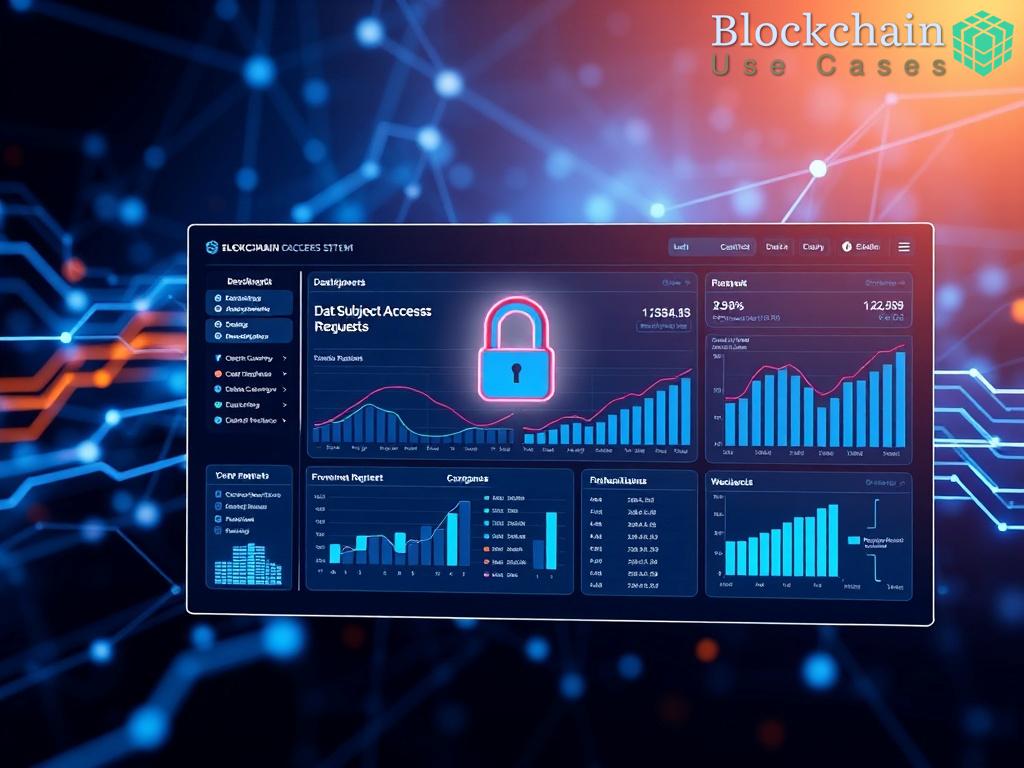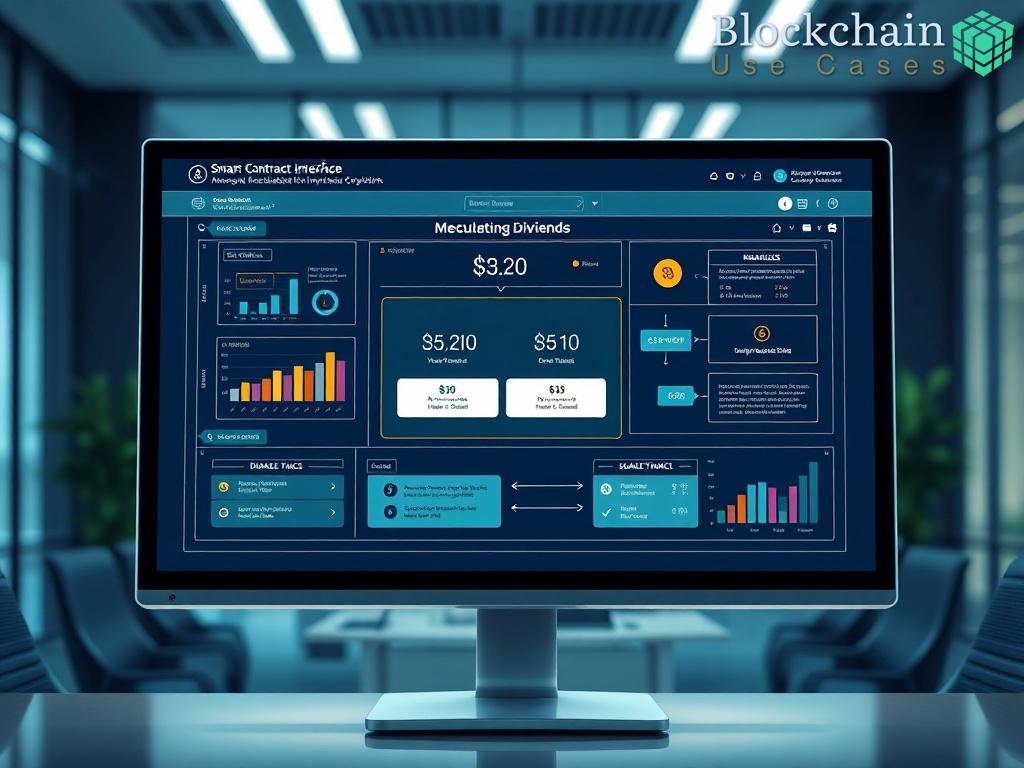Understanding Smart Contracts in Insurance
The insurance industry has long been characterized by complex processes and opaque calculations, particularly when it comes to policy dividends. Traditional dividend calculations can be cumbersome, often involving multiple intermediaries and lengthy timelines. However, the advent of smart contracts is set to revolutionize this landscape, providing a more efficient, transparent, and automated approach to dividend distribution.
Smart contracts are self-executing contracts with the terms of the agreement directly written into code. They operate on blockchain technology, ensuring that all transactions are secure and immutable. This technological innovation not only streamlines the dividend calculation process but also enhances trust among policyholders.
Integrating smart contracts within insurance dividend calculations offers several significant advantages that can enhance operational efficiency and policyholder satisfaction. Below is a summary of key benefits:
- Transparency: All stakeholders have access to the same information, reducing disputes and misunderstandings.
- Efficiency: Automated processing of dividend payments minimizes administrative overhead and accelerates distribution timelines.
- Cost-Effectiveness: By eliminating intermediaries, smart contracts can reduce operational costs.
- Security: Blockchain technology provides a secure environment, protecting sensitive data and transactions.
- Accuracy: Automated calculations reduce human error, ensuring more precise dividend distributions.
While the potential of smart contracts in insurance is substantial, there are challenges that must be navigated. Insurers need to consider regulatory compliance, the need for robust cybersecurity measures, and the integration of existing systems with blockchain technology. Additionally, educating both policyholders and employees about how smart contracts function is crucial to fostering acceptance and trust.
As the insurance industry moves toward embracing this technology, it is imperative to conduct thorough risk assessments and pilot programs to identify best practices and potential pitfalls before full-scale implementation.
Mechanisms for Dividend Calculations
The integration of smart contracts into the insurance sector introduces a paradigm shift in how dividends are calculated. By leveraging automated calculation processes, insurers can ensure that policy dividends are determined based on predefined algorithms that take into account relevant factors such as premium payments, claims history, and investment performance. This automation minimizes the manual intervention traditionally associated with dividend calculations, resulting in a swift and reliable process. The use of coded rules within the smart contracts allows for real-time updates and adjustments as necessary, responding dynamically to changes in policyholder circumstances or market conditions.
One of the cornerstone mechanisms for effective dividend calculation is the assurance of data integrity and validation. When smart contracts operate on a blockchain, the data inputs used for dividend calculations are securely stored and tamper-proof, which significantly reduces the risk of fraud or error. Each transaction or data input is recorded in a decentralized ledger, ensuring that every stakeholder can verify the accuracy of the information used in the dividend computation process. This level of transparency not only enhances the confidence of policyholders in the fairness of dividend distributions but also streamlines the auditing process for insurers.
Another significant advantage of utilizing smart contracts for dividend calculations is the ability to implement real-time adjustments and reporting mechanisms. As market conditions fluctuate or as new data becomes available—such as changes in investment returns or policyholder behavior—smart contracts can automatically recalibrate the dividend payouts accordingly. This agility in dividend management not only ensures that policyholders receive an accurate reflection of their entitled dividends but also allows insurers to maintain financial stability and manage their obligations effectively. Furthermore, real-time reporting capabilities provide both insurers and policyholders with immediate access to dividend status and historical data, fostering a transparent relationship built on trust.
Automation of Distribution Processes
The integration of smart contracts into the insurance sector heralds a new era of automated distribution processes that promise efficiency and accuracy in dividend payouts. By leveraging the capabilities of blockchain technology, insurers can streamline the distribution of policy dividends, ensuring that payments are executed promptly and accurately according to predefined criteria. This transformation not only benefits insurers by reducing operational costs but also significantly enhances the experience for policyholders.
Streamlined Workflow: With traditional methods, the dividend distribution process often involves a labyrinth of manual steps, which can lead to delays and errors. Smart contracts allow for a seamless workflow where each step of the distribution process is encoded into the contract. This means that once the conditions for dividend payouts are met—such as the completion of a policy term or the achievement of specific performance metrics—the smart contract automatically triggers the distribution of funds to the policyholders. This level of automation minimizes human intervention, thereby reducing the likelihood of mistakes and ensuring that dividends reach their intended recipients without unnecessary hold-ups.
Real-Time Processing: Another remarkable feature of automated distribution processes is the capability for real-time processing. Instead of waiting for scheduled payment cycles, smart contracts can execute distributions as soon as the necessary conditions are satisfied. This immediacy is particularly advantageous during volatile market conditions, where timely dividend payments can significantly impact policyholder satisfaction and trust. By providing an instantaneous response to predefined triggers, insurers can foster a stronger relationship with their clients, showcasing their commitment to transparency and efficiency.
Enhanced Transparency and Trust: The essence of smart contracts lies in their transparency. All transactions processed through these contracts are recorded on a public ledger, allowing all stakeholders to verify the distribution process. This transparency is pivotal in building trust between insurers and policyholders. By enabling policyholders to track their dividends in real-time, insurers can alleviate concerns over the accuracy of calculations and the timing of payouts. The enhanced visibility into the distribution process cultivates a sense of security among policyholders, who can confidently rely on the integrity of the system.
Benefits of Transparency and Security
The integration of smart contracts into the insurance sector marks a significant shift towards greater transparency. With traditional systems often shrouded in complexity, policyholders have frequently grappled with uncertainties regarding their dividend calculations. Smart contracts operate on a decentralized blockchain, making every transaction visible and verifiable. This inherent transparency not only reduces the chances of discrepancies but also fosters a relationship built on trust between insurers and policyholders. As stakeholders can observe the entire dividend distribution process in real-time, they gain the confidence that their interests are being safeguarded.
Security remains a paramount concern in any financial transaction, and smart contracts offer a robust solution. By leveraging blockchain technology, smart contracts ensure that data integrity is maintained through a decentralized ledger. This mitigates the risks associated with fraud and hacking, as altering any recorded information would require altering the entire network—a virtually impossible task. Furthermore, the use of cryptographic techniques enhances data security, ensuring that sensitive personal and financial information is protected from unauthorized access. The result is a fortified environment where both insurers and policyholders can conduct transactions with peace of mind.
One of the most noteworthy features of smart contracts is the facilitation of reliable auditing processes. Every action taken—whether it be a dividend calculation or a distribution—is automatically recorded on the blockchain. This immutable record serves as an audit trail that can be referenced at any time, providing unparalleled accountability. Policyholders can independently verify the accuracy of their dividends, leading to a significant reduction in disputes. In an era where trust is crucial, the ability to conduct transparent audits transforms the landscape of insurance dividends, ensuring that policyholders are justly rewarded for their loyalty and investment.
Challenges and Limitations in Implementation
The integration of smart contracts into insurance policy dividend calculations and distributions heralds a promising evolution in the industry. However, as with any transformative technology, there are numerous challenges and limitations that stakeholders must navigate to fully harness its potential. Understanding these obstacles is crucial for insurers aiming to successfully implement smart contracts, ensuring that they are well-prepared to address them proactively.
One of the foremost challenges in implementing smart contracts in insurance revolves around regulatory compliance. The insurance sector is heavily regulated, and the introduction of blockchain technology, coupled with automated processes, raises questions regarding adherence to existing laws and regulations. Insurers must work closely with regulatory bodies to ensure that smart contracts meet legal standards and do not inadvertently violate any consumer protection laws. Furthermore, the lack of a standardized framework for smart contracts can lead to discrepancies in interpretation, making it imperative for insurers to invest in legal consultations and compliance strategies that align with both local and international regulations.
Another significant hurdle is the technological integration of smart contracts with existing insurance systems. Many insurers still rely on legacy systems that may not be compatible with blockchain technology. Transitioning to a smart contract framework requires substantial investment in new infrastructure and training for employees, which can pose operational challenges. Additionally, while blockchain offers enhanced security features, it is not immune to cyber threats. Insurers must prioritize robust cybersecurity measures to protect sensitive data and ensure that their smart contract systems are resilient against potential attacks. The need for ongoing security assessments and updates can strain resources, particularly for smaller insurance providers.
The successful adoption of smart contracts is also contingent upon the education and acceptance of all stakeholders involved, including policyholders, agents, and employees. Many individuals may be unfamiliar with the workings of smart contracts and blockchain technology, leading to skepticism and reluctance to embrace this new paradigm. Insurers must invest in comprehensive training programs and clear communication strategies to demystify smart contracts and illustrate their benefits. Building a culture of trust and understanding is essential to overcoming resistance and ensuring that all parties are aligned with the new processes and technologies.


















